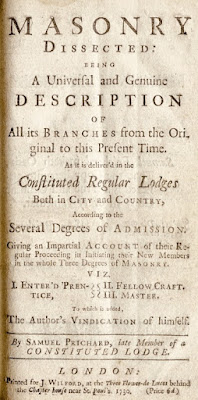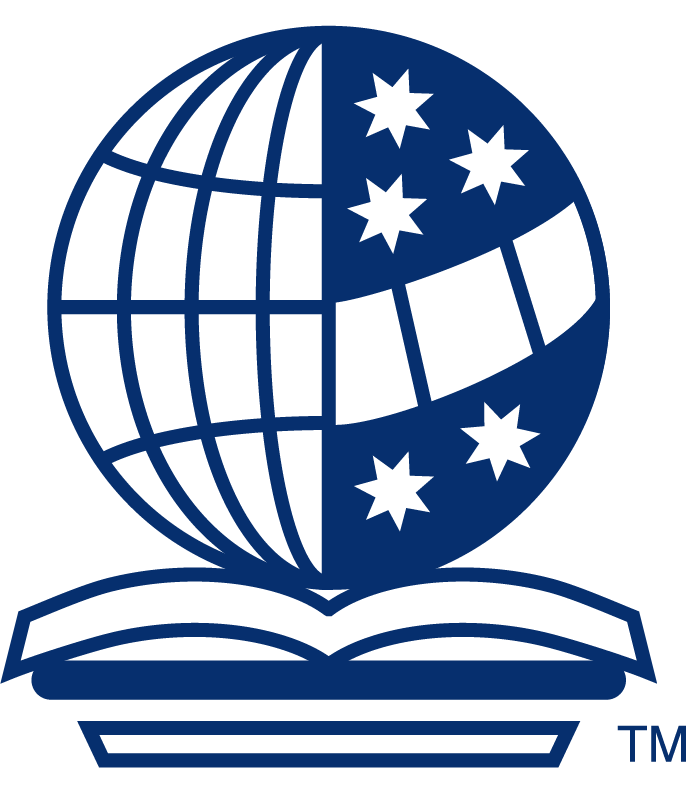The Masonic Book Club announced today how its second offering to subscribers will be Masonry Dissected, that early ritual exposure from 1730 that gives us the first evidence of a Master’s Degree.
To recap: The MBC is no longer organized for dues-paying members, but instead now publishes books in limited runs predicated on advance sales. Pre-paid orders, at $30 per copy, are being accepted now through February 28. We can expect to receive our books in the mail in June. Those who decline to purchase in advance are to be pitied, and therefore will have a slight chance of obtaining the book at $40 a copy. Don’t be one of those guys.
Samuel Prichard is unknown to history save for the publication of this book, the full title of which is:
Masonry Dissected; being a Universal and Genuine Description Of all its Branches from the Original to this Present Time. As it is deliver’d in the Constituted, Regular Lodges, Both in the City and Country, According to the Several Degrees of Admission; Giving an Impartial Account of their Regular Proceedings in Initiating their New Members in the whole Three Degrees of Masonry, viz. I. Entered ’Prentice; II. Fellow Craft; III. Master. To which is added, The Author’s Vindication of himself. By Samuel Prichard, late member of a Constituted Lodge. London; Printed for J. Wilford, at the Three Flower-de-Luces behind the Chapter-house near St. Paul’s. 1730 (price 6 d).
And that vindication?
If all the Impositions that have appear’d amongst Mankind, none are so ridiculous as the Mystery of Masonry, which has amus’d the World, and caused various Constructions and these Pretences of Secrecy, invalid, has (tho’ not perfectly) been revealed, and the grand Article, viz. the Obligation, has several Times been printed in the Publick Papers, but is entirely genuine in the Daily Journal of Saturday, Aug. 22, 1730, which agrees in its Veracity with that deliver’d in this Pamphlet; and consequently when the Obligation of Secrecy is abrogated, the aforesaid Secret becomes of no Effect, and must be quite extinct; for some Operative Masons (but according to the polite way of Expression, Accepted Masons) made a Visitation from the first and oldest constituted Lodge (according to the Lodge Book in London) to a noted Lodge in this City, and was denied Admittance, because their old Lodge was removed to another House, which, tho’ contradictory to this great Mystery, requires another Constitution, at no less Expense than two Guineas, with an elegant Entertainment, under the Denomination of being put to Charitable uses, which if justly applied, will give great Encomiums to so worthy an Undertaking, but it is very much doubted, and most remarkable to think it will be expended towards the forming another System of Masonry, the old Fabric being so ruinous, that unless repair’d by some occult Mystery, will soon be annihilated.
I was induced to publish this mighty Secret for the public Good at the Request of several Masons, and it will, I hope, give entire Satisfaction, and have its desired Effect in preventing so many credulous Persons being drawn into so pernicious a Society.
Cazart! That guy needed an editor. We today are lucky to have Brent Morris and Arturo de Hoyos, who are reprinting the MBC’s earlier imprint of Masonry Dissected, and augmenting Harry Carr’s commentary.
I’ve always wondered somewhat if the author truly intended to harm the Craft, because what actually happened was our ancient brethren were able to obtain a ritual book for use as a guide. Grand lodges wouldn’t publish such books officially for about another 200 years, so I figure it’s possible that Prichard deserves some credit for promulgating and proliferating the Third Degree. In addition to being reprinted twenty-one times up to 1787, Masonry Dissected also was translated into Dutch, French, and German in the 1730s, when Freemasonry took root across Europe. Unintended consequences? Coincidences? I wonder.








































































